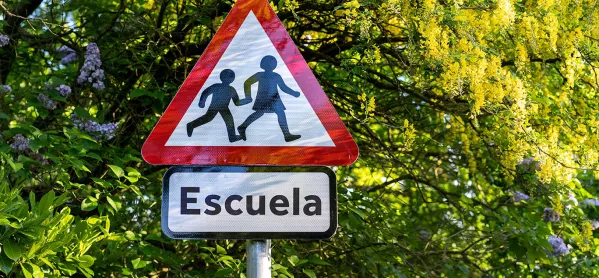Spanish is set to overtake French as the most popular GCSE language choice at schools in England, a new report has predicted.
The new Language Trends 2023 report, conducted by the British Council, has found that having been the most selected language at A level for the last four years, Spanish now looks set to replicate that popularity at GCSE level.
While Spanish, French and German remain the most popular languages at GCSE, German is falling increasingly behind, and there were more than 35,000 entries for other modern languages, the highest number recorded so far.
The research, which surveyed more than 1,300 teachers from primary, secondary and independent schools in England, was carried out by Dr Ian Collen, senior lecturer and director of information on language teaching and research at Queen’s University Belfast.
The report says that only one in 10 state schools (10.7 per cent) report that all of their pupils are currently doing a modern foreign language at GCSE. But it says that that state schools have reported a positive increase in pupils studying a language at key stage 4 over the past three years.
However, it warns that there is still a long way to go before the government’s target that 90 per cent of Year 10 students take a modern foreign language at GCSE.
The government had set the target for 90 per cent of pupils to be studying the GCSE subjects needed for the EBacc - which includes a modern foreign language - by 2025.
Dr Collen said: “The data from this year’s Language Trends report show clear areas for improvement in schools across England, particularly in relation to the time and resource placed in language learning and the uptake of German at GCSE and A level.”
In an attempt to increase future uptake, the Department for Education has invested £14.9 million to establish the National Consortium for Languages Education (NCLE), with the programme placing particular emphasis on German.
On this initiative, Vicky Gough, schools adviser at the British Council, said: “After worrying signs of decline in language learning and evidence of a growing social divide when it comes to children learning modern languages, formation of the NCLE is welcome news.”
In primary schools, the report finds that “almost nine out of 10 responding schools have pupils for whom English is an additional language”, with many teachers reporting that they endeavour to incorporate their pupils’ home language into the curriculum.
Warning over MFL in primaries
Despite nine out of 10 responding primary schools having taught languages in 2022-23, time constraints, a lack of resources and the prioritisation of additional literacy and numeracy learning is said to have had a negative effect on the quality and quantity of teaching.
The report found this is also impacting the transition to secondary school, with only 9 per cent of responding secondaries reporting an improvement in the preparation of Year 7 pupils, despite a reported increase in communication between schools about language learning.
At key stage 3, French remains the most taught, followed by Spanish and German, with Mandarin Chinese now established as the fourth most popular language in state schools.
Further findings from the report suggest that, having been severely impacted by the pandemic, schools’ international engagement and partnerships with schools abroad are beginning to show signs of recovery.




